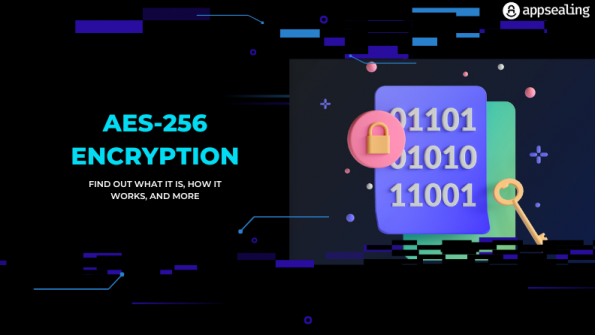The discourse surrounding encryption methodologies, particularly the Advanced Encryption Standard (AES), engenders intense scrutiny within the realms of cybersecurity and data protection. Among the various incarnations of AES, AES-256 garners considerable attention due to its robust security profile, stemming from a key length of 256 bits. This article delves into the nuances of AES-256, exploring its security mechanisms, the implications of open-source code visibility, and how these factors contribute to the overall integrity and resilience of encrypted data.
To comprehend the security of AES-256, it is crucial to grasp the foundational principles of symmetric-key cryptography. In this paradigm, both the encryption and decryption processes utilize the same key. The strength of AES-256 relies not only on the key length but also on the algorithm’s design, which incorporates multiple rounds of transformation operations, specifically 14 rounds in the case of AES-256. These rounds involve substitution, permutation, and mixing operations that obfuscate the plaintext, rendering it indistinguishable from random data.
However, the question arises: How secure is AES-256 if its code is publicly accessible? The capability to see the underlying code does not inherently compromise the security of the encryption. In fact, the transparency of the code can be advantageous, allowing for peer review by cryptographers and security experts. This scrutiny can lead to the identification of potential vulnerabilities or optimizations that enhance the algorithm’s robustness. The phenomenon of open-source software has produced myriad cryptographic solutions, with many experts advocating that public access to the code fosters a greater degree of trust in the system’s integrity.
Nonetheless, concerns linger regarding the consequences of widespread visibility of the encryption implementation. First and foremost, adversarial actors, possessing knowledge of the algorithm’s structure, may deploy brute force attacks or other cryptanalytic methodologies to exploit weaknesses. Brute force attacks, while computationally daunting against AES-256 due to its vast key space, remain a theoretical possibility. Theoretically, an attacker would need to exhaustively search through an astronomical number of key combinations, a feat that currently remains beyond reach for computational resources available today.
Furthermore, the security of AES-256 is contingent not only on the algorithm but also on the implementation. Open-source code lends itself to critical examination, ensuring that developers do not introduce inadvertent flaws during integration. However, if a poorly executed implementation exposes vulnerabilities, even the most resilient algorithms can become susceptible to attacks. The integrity of cryptographic systems, thus, depends on the symbiosis between robust algorithms and meticulous implementation practices.
The establishment of encryption standards such as AES is not merely academic; it is a response to prevailing threats. AES-256 has withstood significant mathematical scrutiny and has been adopted globally across various sectors, from government communications to financial transactions. Adversaries are continually seeking methods to undermine encryption; hence, cryptographic systems must evolve to counter emerging threats. The public availability of the AES-256 code does not diminish its efficacy; rather, it enforces a community-oriented approach to cryptographic security, engendering advancements through collaboration.
While AES-256 stands as a formidable safeguard against unauthorized access, it is not impervious. Security vulnerabilities can arise not solely from algorithmic weaknesses but also from human misconfiguration and operational security lapses. The key management process, for instance, is pivotal. If the key is disclosed or inadequately protected, the entire encryption scheme collapses regardless of the strength of the algorithm in use. Thus, safeguarding the key becomes tantamount to preserving the encrypted data’s confidentiality.
Moreover, the security landscape is constantly evolving. Quantum computing poses a future threat to conventional cryptographic approaches. Although a fully functional quantum computer capable of breaking AES-256 remains theoretical, the potential for such advancements necessitates a proactive stance from the cryptography community. Preparing for quantum resistance has prompted ongoing research into post-quantum cryptographic algorithms that could withstand the computational capabilities of future technological innovations.
Ethical considerations also emerge from the discussion of encryption and security. The balance between privacy and surveillance has intensified. Advocates argue that encryption fosters individual privacy and autonomy, while detractors contend that unfettered encryption can shield criminal activity. This discourse underscores the importance of fostering dialogue between stakeholders to arrive at societal consensus on the acceptable use and regulation of cryptographic technology.
In conclusion, the security of AES-256 transcends the mere visibility of its code. The algorithm’s intrinsic design, alongside the practices surrounding its implementation and key management, are vital components that collectively reinforce its resilience. While public scrutiny invites potential vulnerabilities, it also cultivates an informed community committed to fortifying data security practices. As adversaries become more sophisticated, continuous evolution and collaborative efforts will be integral in maintaining the sanctity of AES-256 and ensuring its efficacy against emerging threats. The future of cryptography must pivot not only on individual algorithms but also on the ethical, social, and technological landscapes that shape our collective understanding of security and privacy.








Leave a Comment